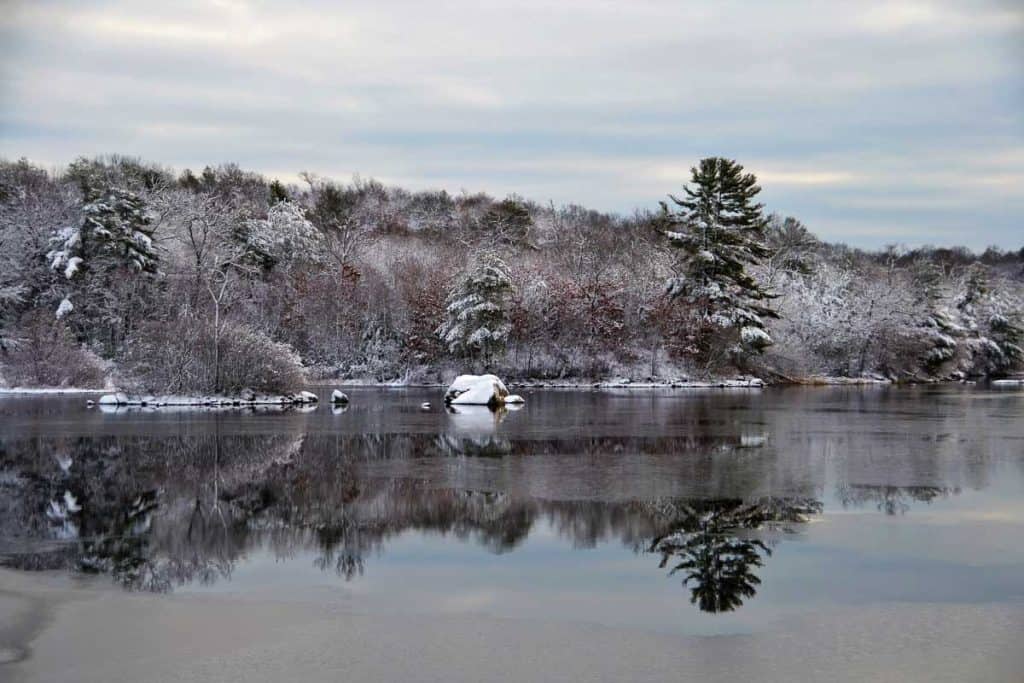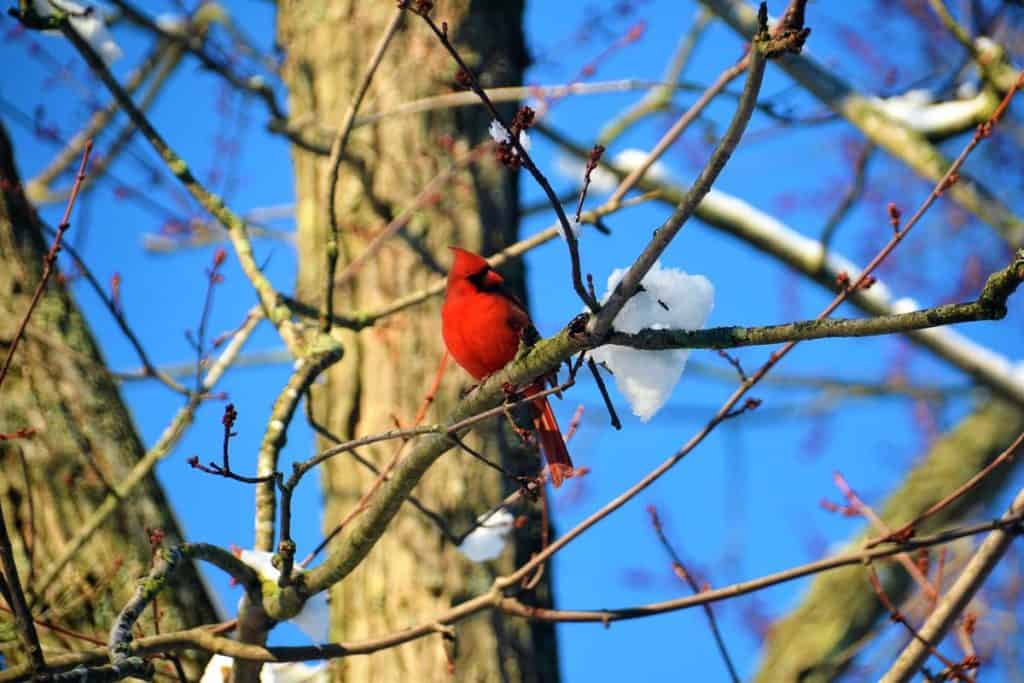Here’s what’s blooming in town this week to make your walks more enjoyable
Everyone who has complained about the lack of snow this winter got a good dose of it this week! Monday’s storm in particular brought about 5″ to most neighborhoods by the time it had all settled that night. Every branch was coated overnight and remained for a while in the morning until the sun broke through the clouds. It is somewhat unusual to have a good coating like that when the ponds are still not completely frozen over, but that was the case almost everywhere due to the temperatures fluctuating around the freezing mark as they have been.
Sunday marked the lunar New Year and ushered in the Year of the Rabbit. The fourth animal in the 12-year Chinese zodiac cycle usually is considered a very lucky one, indicating good luck and longevity to those born in that year. The actual animal of this zodiac sign is more likely to be a hare, closely related to and often confused with rabbits.
Hares indigenous to Asia include the Yunnan hare (Lepus comus) of China, the Korean hare (Lepus koreana),which lives in Korea and parts of China, and several others. There are also hare species native to Europe and to western North America. To add to the confusion, North American hares are often known as jackrabbits, like the black-tailed jackrabbit (Lepus californicus), which is sometimes called California hare. In Arizona you might encounter the antelope jackrabbit (Lepus alleni), which is not the same as the mythical jackalope – the latter is often depicted sporting antlers! But the question you really need answered is who ate your tulips last spring? That is most likely to have been the eastern cottontail (Sylvilagus floridanus), which is the most common wild rabbit species in southern New England. While hares and rabbits all have long ears and a fluffy tail, hares are larger and more athletic, run much faster, are much less likely to live in social groups, usually live aboveground rather than in burrows like rabbits, and have somewhat different diets. Rabbits are active year-round and do not hibernate for the winter like groundhogs do, but they may occupy somewhat different seasonal territories depending on their food sources.
Coming up on Thursday, February 2, is Groundhog Day. If you are tired of winter already, that date marks halfway between the winter solstice and spring equinox. Whether our local groundhogs, like the one who sunned itself regularly in front of the forge building of the ironworks last fall, come out to check their shadows on Thursday will depend somewhat on temperature. If they do feel like coming out of hibernation Thursday, we hope it will be cloudy so they aren’t startled by their shadow! A sunny day could cause six more weeks of winter!
While many bird species migrate, we certainly have many which stay around even during the snowy months. We may be as grateful to see the birds at the feeder as they are to find the feeders full of seeds. And like the birds we may plump ourselves up with comfort foods at this time of year. Charles and Kathy Zapolski recently treated their feathered friends to pie – cranberry apple pie with a sprinkling of bird seeds – which was viewed as a treat by several species. In the photo above a tiny Carolina wren (Thryothorus ludovicianus) is standing its ground to be sure the house sparrow (Passer domesticus) doesn’t get a bigger piece!
Evergreens like eastern white pine (the tall evergreens seen in the snowy scene at Birch Pond above) help provide shelter to birds and other wildlife during storms, but some buds are already swelling on deciduous trees. Silver maple (Acer saccharinum) and red maple (Acer rubrum) have buds which are noticeably larger than a few weeks ago already. Foliage of early bulbs like snowdrops (Galanthus spp.) and daffodils (Narcissus spp.) are showing green during the melting periods between snowstorms.







